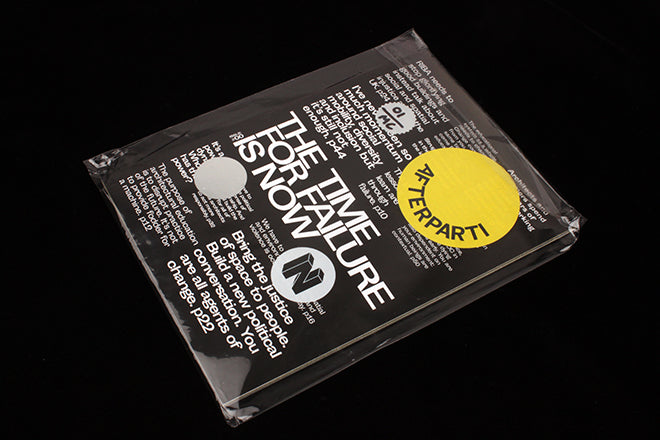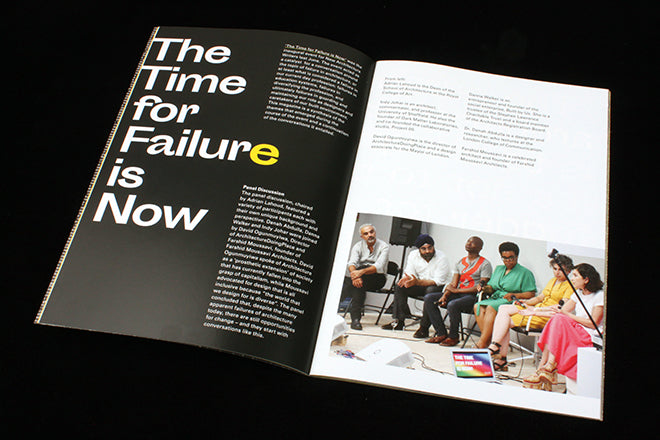
Afterparti, #00
New magazine Afterparti marks a shift from the founding cohort of the New Architecture Writers to the Afterparti collective. Their first foray into magazine-making marks ‘an experiment in style, voice and collaboration’. The theme for the prototype issue – ‘The time for failure is now’ – was the catalyst for conversation at the collective’s inaugural event in 2018.
The issue makes a strong first impression, its stark manifesto-like cover wrapped in a sticker-strewn transparent plastic envelope.

Inside, after introducing the members of the collective and their goals, the issue kicks off with a brief note on the aforementioned conversation, outlining the different ways that the profession does, doesn’t, or ought to embrace failure, but swiftly moves on to allow the magazine to expand on the discussion rather than dwell on it.

The magazine is sparsely designed, allowing room for pieces to breathe, and features a mix of image or text-led features. Accompanying an almost-manifesto by the magazine’s ‘graphics tsar’ Aoi Philips, is this intricate illustration making reference to all the things she writes about. (It’s perhaps not a surprise to see a faux-billboard of the Real Review in her illustration – this magazine inevitably follows in the rather large footsteps of that magazine, and indeed RR’s own Shumi Bose and Jack Self are listed as supporters of Afterparti.)
Elsewhere, an attention-grabbing yellow – courtesy of Philips, who gives the colour a shout-out in her bio – is primarily used with the (mostly) black and white layout. Notably it hoghlights the centrefold, which features survival tips and tunes for BAME architects.

Providing a bit of historical context are single-page ‘failure from the archives’ features: focusing on arresting images from the late 1960s of slum clearance in Kensington, the black-bordered pages are a reminder of the immense slum clearances that resulted in 15% of homes in England being destroyed, and argues for the architectural un-necessity of the act, and the resulting social displacement of the working class population.

The last piece in the magazine is a handwritten letter to the Dean of Architecture at the RCA, based on conversations with the author Thomas Aquilina. The contents are a musing on mental health and architecture, and the personal nature of the experiences that Aquilina brings to the table are heightened by the decision to print a handwritten letter – it helps that his handwriting is incredibly legible and visually compelling.
The magazine ends on a single statement: Fail better. There are few voices in architecture that are this fresh and disruptive of the status quo, it will be interesting to see what journey this magazine takes after this very energetic issue zero.
Editorial collective: Shukri Sultan, Aio Philips, Tara Okeke, Maria El Mubark, Thomas Aquilina, Nile Bridgeman, Samson Famusan, Josh Fenton and Siufan Adey.



